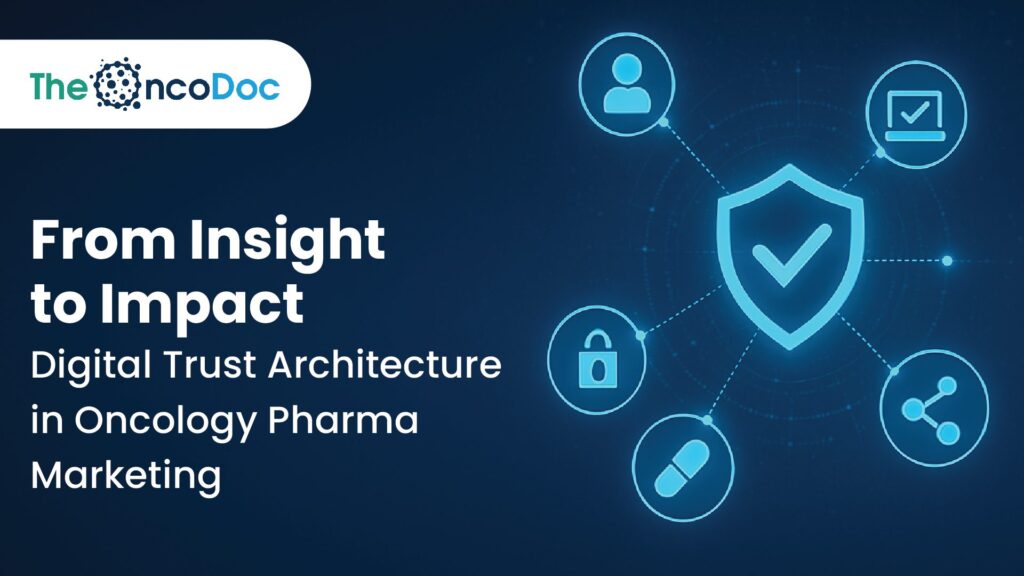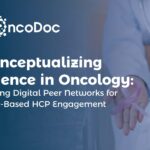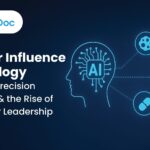Introduction: The Trust Deficit in Oncology Engagement
In today’s oncology landscape, where molecular complexity and therapeutic advancement outpace traditional marketing models, the most scarce yet impactful currency is trust. For healthcare professionals (HCPs) who navigate high-stakes decision-making under intense emotional and clinical pressure, promotional messaging must give way to insight-rich, scientifically grounded, and behaviorally intelligent communication.
This article outlines how oncology brand teams can re-engineer their digital engagement frameworks by constructing trust architecture, a modular, data-informed approach that prioritizes HCP empowerment, clinical collaboration, and ethical excellence.
1. The Anatomy of Trust in Oncology Engagement
While traditional trust relied on message frequency, modern oncology outreach demands a richer approach. Trust must now be architected across five foundational pillars:
- Transparency
Openly sharing data, outcomes, and funding sources, especially real-world evidence (RWE), builds credibility from the outset. - Clinical Relevance
Digital content must resonate with the HCP’s specialty (GI, GU, Hem/Onc) and contextual practice setting, whether adjuvant therapy or survivorship care. - Cross-Channel Consistency
Messaging and brand tone must be uniform across digital interfaces, field teams, KOL touchpoints, and scientific publications. - Accessibility
Formats tailored for efficiency, e.g., swipe-mode videos, interactive visuals, and voice-enabled bots, drive adoption and engagement. - Ethical Alignment
Compliance with MLR standards, ethical AI, and alignment with societal values reinforces trust and mitigates reputational risk.
1. The Trust Framework: What HCPs Expect Now
Trust is no longer built through frequency alone. It now relies on five key pillars:
- Transparency in data, outcomes, and sponsorship
- Relevance to clinical context and specialty
- Consistency across platforms and stakeholders
- Accessibility of content formats and interfaces
- Ethical alignment with practice values
Breakdown of the most effective digital tactics for building trust with oncologists
2. Smart Segmentation: Oncology-Specific HCP Targeting
One-size-fits-all targeting underperforms in oncology. Generic marketing fails in oncology. Brands must segment HCPs along multiple dimensions.
- Subspecialty Focus (e.g., GI, GU, Hem/Onc)
- Adoption Stage (innovator, early, mainstream, or laggard)
- Digital Behavior (e.g., podcast listener, peer video viewer, point-of-care tool user)
- Clinical Role (therapeutic vs. diagnostic vs. survivorship-focused)
Advanced Customer Relationship Management (CRM) systems can fuse first-party engagement data (logins, content clicks) with third-party prescribing and RWE patterns. This enables dynamic updating of segmentation profiles, automatically optimizing with every content interaction.
3. Precision Content Strategy: Designing for Trust and Speed
To earn HCP engagement and reinforce trust, content must be
- Modular
Bite-sized, and recombinable; ranging from case summary videos to micro-learning cards. - Transparent
Clearly citing data sources, trial limitations, conflicts of interest, and MLR approvals. - Speed-Optimized
Under 10 minutes per unit to fit into the compressed schedules of active clinicians.
Modular content tailored to HCP needs is the foundation of pharma trust-building. Examples:
- 10-minute case roundups via video
- Visual abstracts of trial data, optimized for mobile
- Swipe-based microlearning for CME on Instagram or WhatsApp
Indicates HCP preferences for high-yield educational formats
4. Behavioral Design in Digital Pharma Engagement
Effective oncology engagement hinges on behaviorally informed design. Digital experiences should be
- Informed by Behavioral Economics:
Use scarcity, bandwagon, and anchoring effects ethically, for instance, “80% of your GI oncologist peers are using this protocol.” - Priming CME Engagement:
Pre-event content (short videos or infographics) sent as “pre-reads” can increase attendance and application. - Gamification:
Protocol recall quizzes with leaderboard badges to motivate deeper learning—and peer visibility.
Metrics to consider:
Applying behavioral science can drive meaningful actions. Use:
- Nudges like comparative data visuals to influence diagnostics
- Priming via pre-event DOL commentary to increase CME uptake
- Gamification to boost recall of updated protocols
This leads to not only more clicks but also more clinical conversations.
6. AI-Augmented Content Delivery: Smart, Ethical, and Actionable
Artificial intelligence, when transparently and responsibly applied, can elevate oncology engagement:
Next-Best-Content (NBC) Engines
AI recommends highly relevant content, e.g., suggesting a GI oncologist who watched a case roundup also explore a visual abstract on adjuvant therapy outcomes.
Channel Fatigue Detection
AI monitors engagement dips and switches channel delivery, e.g., shifting from email to WhatsApp microlearning if open rates fall below 30%.
NLP-Powered Q&A Bots
Provide instant, referenced answers to clinical questions. Must cite sources and reflect MLR-approved guidance only.
Predictive adoption modeling
Forecasts which HCPs are likely to adopt a therapy within 30/60/90 days, enabling proactive educational outreach.
Ethical Requirements:
Training exclusively on licensed datasets
Transparent metadata on AI decisioning
Regular audits for bias (specialty, geography, gender)
7. Omnichannel Sequencing: Orchestrating the Right Moment
After creating trust foundations, segmenting, designing behaviorally smart content, and layering AI, brands must orchestrate seamless omnichannel experiences.
Example Journey for Early Adopter GI Oncologists:
- Week 1: KOL-authored case blog
- Week 2: CME invite via LinkedIn sponsored content
- Week 3: Personalized RWE visual email
- Week 4: Follow-up via rep-triggered WhatsApp summary
- Week 5: Peer video panel recap
Preferred Channel Mix (by HCP preference):
- Interactive PDFs–10%
- Short video panels–32%
- CME modules–26%
- Visual abstracts–18%
- Podcast interviews–14%
Shows preference for interactive and visual-heavy formats
7. Metrics That Matter: Beyond Clicks and Opens
Avoid: Impressions, vanity engagement
Focus on: Traditional engagement metrics (opens, impressions) fail to demonstrate real-world impact. Instead, shift the lens toward:
- Script Lift
Change in prescribing behavior within 30–90 days. - Knowledge Gain
Measured via pre/post CME assessments. - Channel Affinity
Month-over-month return visits and interaction frequency. - Engagement Depth
Scroll length, video replays, quiz scores.
| Channel | ROI Index |
| Peer CME Webinars | 1.8× |
| DOL-LinkedIn Thought Leadership | 1.5× |
| Interactive WhatsApp | 1.3× |
| Rep-triggered eDetail Aids | 1.2× |
| Traditional Email Only | 0.8× |
Example internal ROI benchmarks across multiple oncology initiatives.
Comparative ROI of digital channels for oncology HCPs
8.Designing for Digital Empathy: Human-Centered UX in Oncology
While technology enables scalability, it must not come at the expense of human connection. Oncology is a deeply emotional field,treating not just diseases but lives, families, and futures. As such, pharma marketers must infuse digital engagement with empathy-driven UX principles to resonate with the emotional and psychological context of oncology care.
a) Tone of Voice & Language Sensitivity
Avoid overly technical, robotic, or promotional language. Opt for:
- Conversational, supportive tones in patient-focused sections
- Clinically accurate yet emotionally attuned messaging for HCPs
Example:
Instead of “New molecule with statistically significant PFS,” say, “This therapy extended patient well-being with a 6.4-month increase in progression-free survival.”
b) Inclusive Design & Accessibility
- Ensure all content is compliant with accessibility standards (WCAG 2.1), including font size, alt text, and color contrast.
- Localize content linguistically and culturally. A Spanish-speaking oncologist in the U.S. or an India-based specialist in global trials both need context-sensitive design.
c) Emotional Journey Mapping
Map out the emotional landscape of HCPs dealing with oncology cases:
- Initial Diagnosis → Treatment Planning → Disease Progression → Survivorship or End-of-Life Care
Each stage requires different tones, support tools, and communication modes. For instance, decision trees and trial summaries are better placed during treatment planning, while empathy-focused CME on breaking bad news suits late-stage care.
d) Building Psychological Safety in Interactions
Use interface design to:
- Allow anonymous input during peer polls or educational forums
- Reduce information overload with progressive disclosure (e.g., “read more” toggles)
- Offer opt-outs or content preferences to reduce cognitive fatigue
e) Empathy Metrics
Traditional engagement metrics ignore emotional resonance. Add:
- “Emotional Sentiment” via NLP-based feedback forms
- Net Empathy Score (“NES”),“Did this content make you feel more informed and confident?”
- Emotional dwell time,prolonged pauses on emotionally resonant sections (e.g., survivorship stories)
9.Governance & Ethics: Global Integrity, Local Compliance
Digital trust isn’t just marketing: it’s infrastructure. It requires governance at scale, addressing both global consistency and local nuances.
Key elements to institutionalize:
- Global MLR-AI Working Group:
Steering committee for content, AI oversight, and compliance. - Bias Audits:
Special attention to influencer/advocate campaigns, ensuring diversity in geography, gender, and specialty. - Digital Trust Scores:
A scoring framework (0–100) covering data sourcing clarity, promotional balance, channel integrity, AI transparency, and compliance adherence. - Documented Audit Trails:
Every AI output, content iteration, and HCP interaction is timestamped and audit-ready.
10. Use Case Deep-Dives
A. Early-Stage Lung Cancer Launch
- Trust Goal: Establish credibility for a novel adjuvant therapy.
- Segments: Thoracic oncologists (innovators), pulmonologists (early adopters).
- Cadence:
- Week 1: Visual abstract of pivotal trial
- Week 2: Peer podcast panel discussion
- Week 3: eDetail with interactive pneumonitis management quiz
- Week 4: AI-sent Q&A summary via email
- Outcome:
- Knowledge gain: +42% on trial endpoints
- Script lift: +15% over baseline
- Return visits: +30%
B. Metastatic Breast Cancer Protocol Update
- Trust Goal: Communicate updated dosing guidelines to community oncologists.
- Segments: Community-based oncologists are late mainstream adopters.
- Cadence:
- Explainer micro-video (3 min) →
- Interactive PDF with dosing chart →
- Bot-triggered reminder + CME recap
- Outcome:
- Protocol adherence: +9%
- Depth of engagement: Average scroll length 72% vs. 50% baseline
11. Emerging Trends & Future-Proofing
A. Voice-Enabled Clinical Query Assistants
Enable voice-first micromoments at point-of-care dictation to query dosing, contraindications, or side-effect management. Must include structured citations and disclaimers.
B. VR/AR Case Simulations
Immersive role-play of complex case scenarios:for example, navigating tumor board decisions in a 3D environment. Early pilots suggest increased empathy and retention.
C. Decentralized RWE Publishing
Partnering with HCP networks to crowdsource real-world outcomes and publishing transparent dashboards. Enhances trust through shared accountability.
D. Blockchain-Based Consent & Traceability
Pilot solutions where HCP consent, audience targeting, and content distribution metadata are immutably stored, providing full lineage and auditability.
E. Adaptive Learning Journeys
Immediately pivoting content based on quiz results, e.g., underperformance on toxicity management triggers follow-up microlearning.
Placement: Before Conclusion; to position your brand as forward-leaning.
Conclusion: Building Infrastructure, Not Buzz
In oncology, every moment carries clinical and emotional weight. Pharma’s digital transformation cannot remain superficial:
- From campaigns to clinical calendars
- From promotion to decision support
- From frequency to frameworks
- From vanity metrics to clinical outcomes
When constructed with insight, transparency, segmentation, and ethical rigor, digital trust architecture doesn’t just educate; it empowers. Ultimately, that empowerment results in earlier diagnoses, better therapy adoption, and, most importantly, improved patient outcomes.
When executed ethically and insightfully, trust-based digital engagement not only educates but also empowers. It creates the conditions for earlier diagnosis, better therapy adoption, and, most importantly, better patient outcomes.
The Oncodoc team is a group of passionate healthcare and marketing professionals dedicated to delivering accurate, engaging, and impactful content. With expertise across medical research, digital strategy, and clinical communication, the team focuses on empowering healthcare professionals and patients alike. Through evidence-based insights and innovative storytelling, Hidoc aims to bridge the gap between medicine and digital engagement, promoting wellness and informed decision-making.



